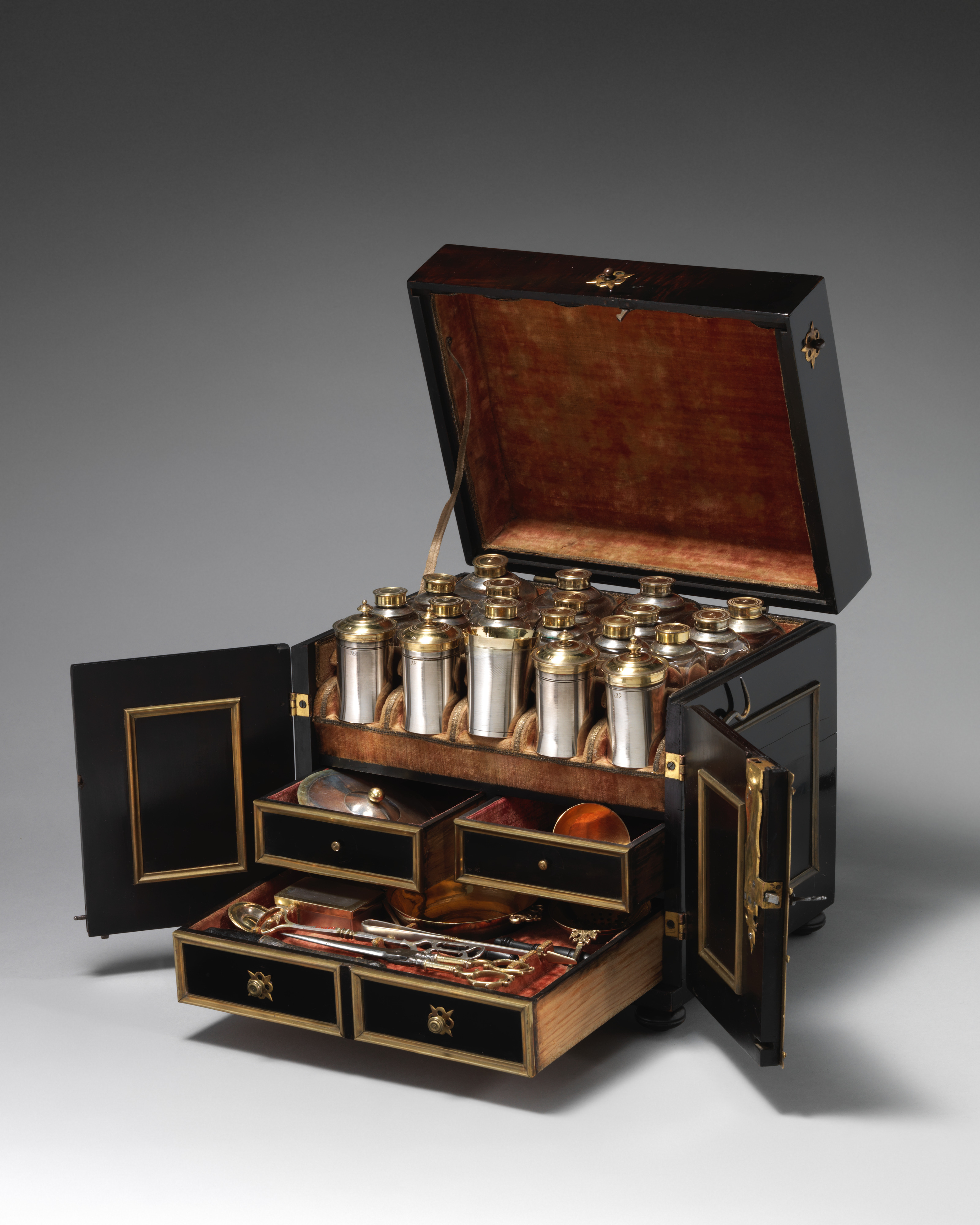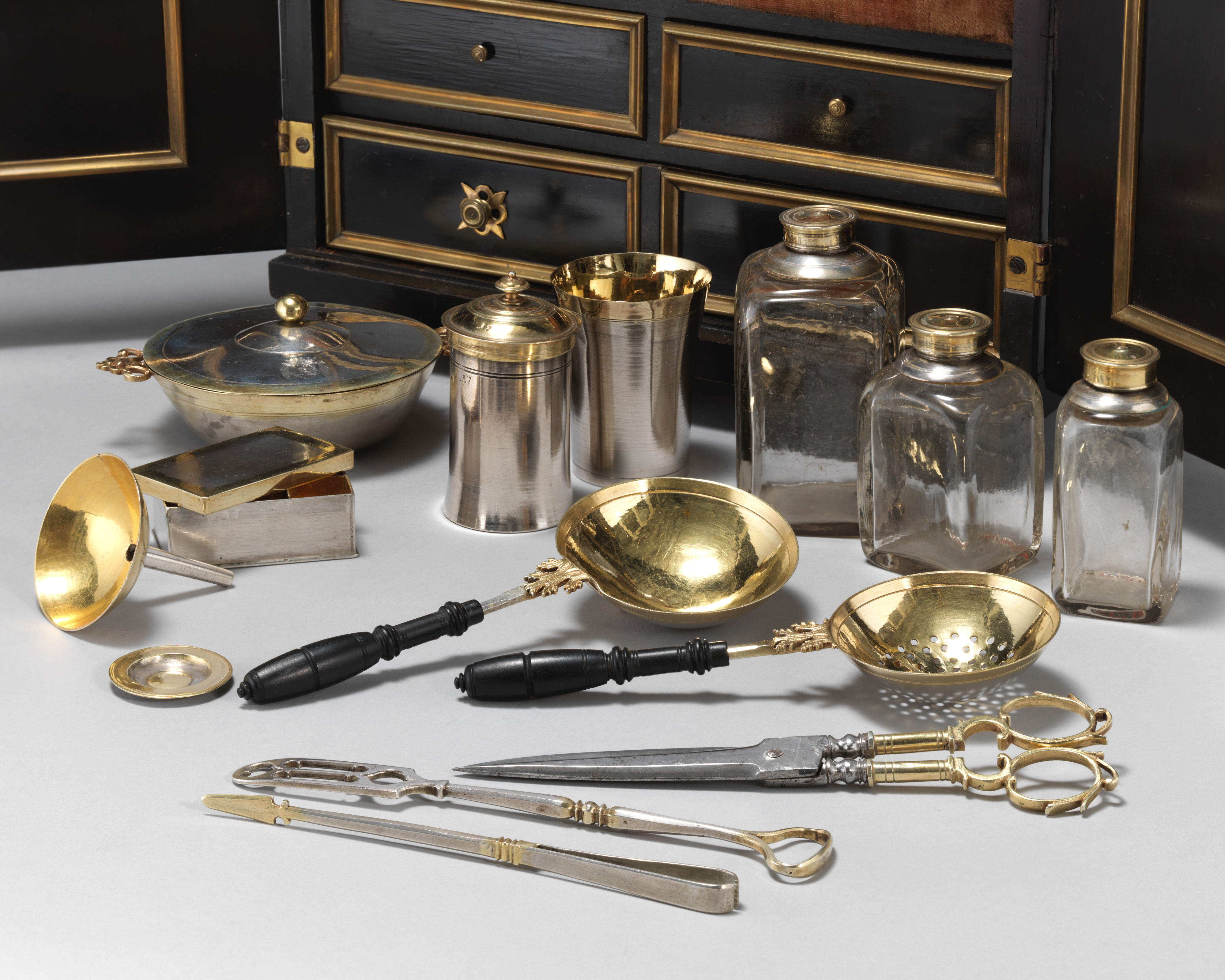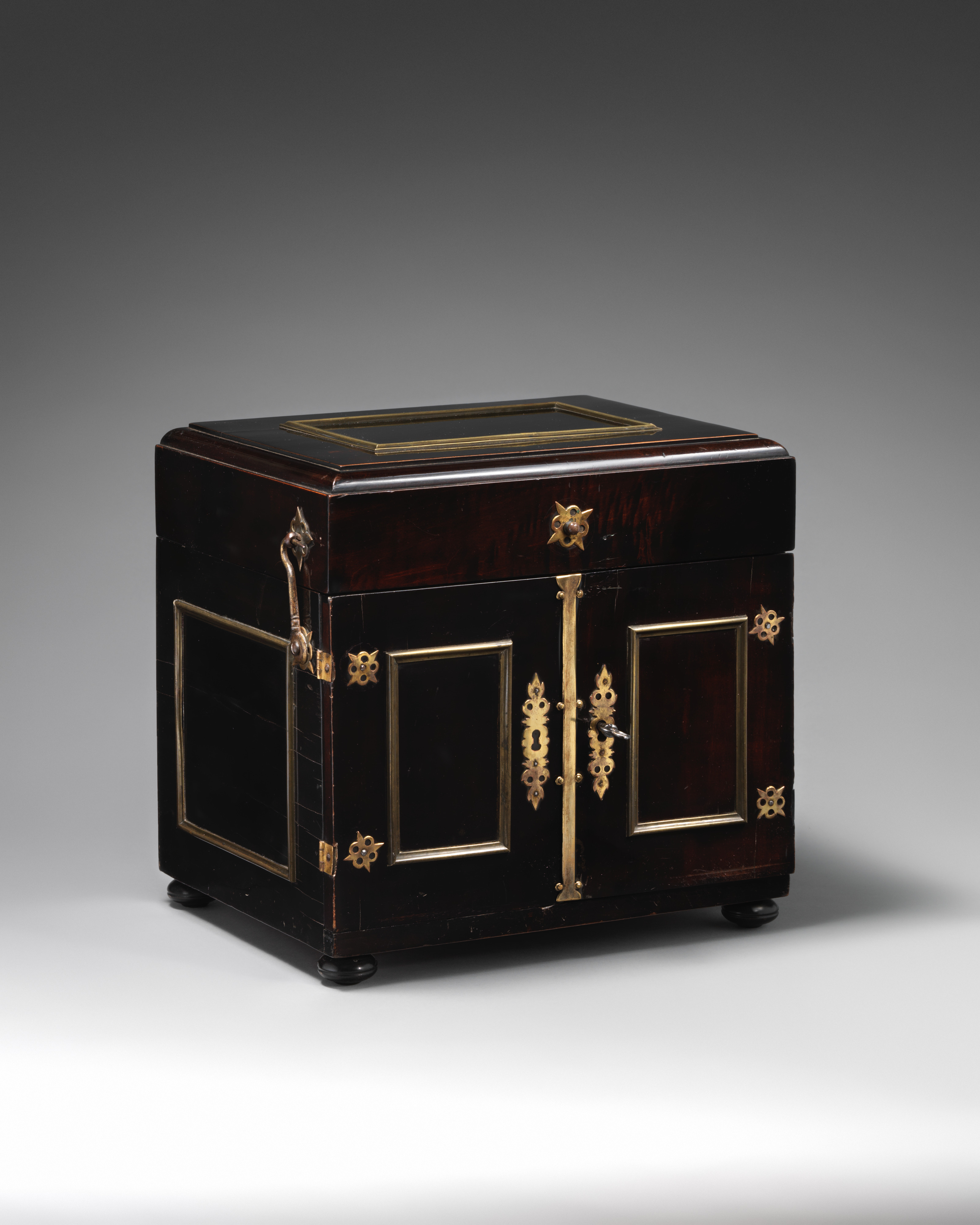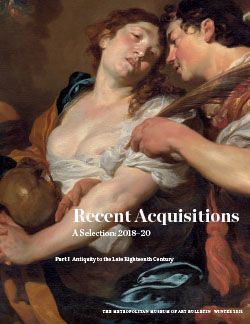Apothecary Cabinet
Goldsmith Nicolaus I Kolb German
Apothecary cabinets like this one were luxury goods made primarily for a princely clientele. The ebonized travelling case, veneered in pear wood, holds a silver medical garniture that would have contained only the most exclusive remedies, including exotic ingredients from far away countries such as pulverized ‘unicorn horn’ (narwhal horn), bezoar stones, and preparations of curative herbs, next to local favorites. The lid of the écuelle in this example, made by master Goldsmith Nicolaus I Kolb, is engraved with the armorial bearings of the Zobel von Giebelstadt family, several members of which held the powerful positions of Prince-Bishops in various German provinces and were discerning art collectors. Chests of this type served as intimate companions to their princely owners, equipped with the indispensable medicine, implements, and instructions for curing almost any of their ailments. It was common for princes to practice medicine themselves, and on a symbolic level, their personal skill in medical endeavors was equated with their ability to heal society, ensuring the wellbeing of their lands through skillful surgical interventions. Displayed in the Kunstkammer, fine surgical instruments and medicine chests could stand as an indication of the ruler’s ability to govern.
Due to rights restrictions, this image cannot be enlarged, viewed at full screen, or downloaded.
This artwork is meant to be viewed from right to left. Scroll left to view more.






